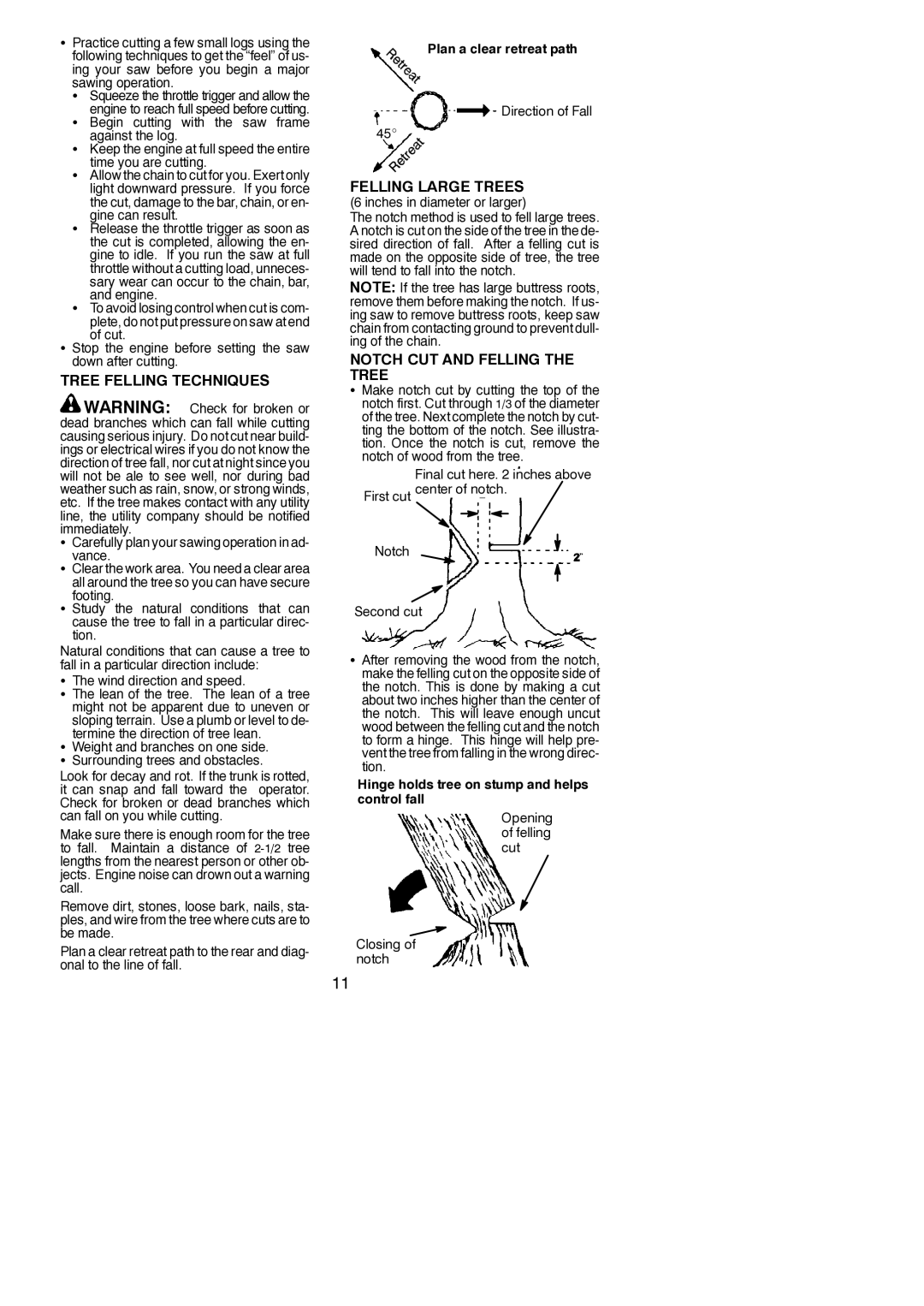PP4620AVL specifications
The Poulan PP4620AVL is a powerful and versatile chainsaw designed for both homeowners and professionals who require a reliable tool for various cutting tasks. This model features a 46cc gas engine that delivers ample power to tackle a range of jobs, from light trimming to more demanding tree-felling applications.One of the standout features of the Poulan PP4620AVL is its advanced air filtration system. This technology enhances engine durability and performance by ensuring that the engine is protected from dust and debris, prolonging its lifespan and maintaining optimal performance. The system is designed to be maintenance-free for a long duration, providing users with peace of mind during operation.
The PP4620AVL is equipped with a tool-free chain tensioning system, which allows for easy adjustments without the need for additional tools. This feature is particularly convenient for users who may need to make quick adjustments while working, ensuring minimal downtime. The chainsaw also has an automatic oiling system that lubricates the bar and chain during use, helping to reduce friction and wear for improved cutting efficiency.
Another impressive aspect of this chainsaw is its lightweight design. Weighing in at a manageable 11 pounds, the PP4620AVL is easy to handle for extended periods, reducing user fatigue while providing the necessary power to complete various tasks. The soft-grip handle adds comfort, allowing for improved control and maneuverability.
Safety is also a priority with the Poulan PP4620AVL. It features a chain brake system that stops the chain quickly in the event of kickback, providing an added layer of protection for the user. Additionally, the chainsaw is designed with an easy-to-access on/off switch and a throttle lockout, ensuring safe operation.
In terms of cutting power, the Poulan PP4620AVL comes with a 20-inch bar, making it suitable for cutting large logs and branches. The combination of the robust engine, efficient cutting system, and user-friendly features make this chainsaw a great choice for anyone from casual users to professionals seeking reliability and efficiency in their cutting tool. With the right maintenance, the PP4620AVL is sure to provide years of service for a wide range of cutting tasks.

